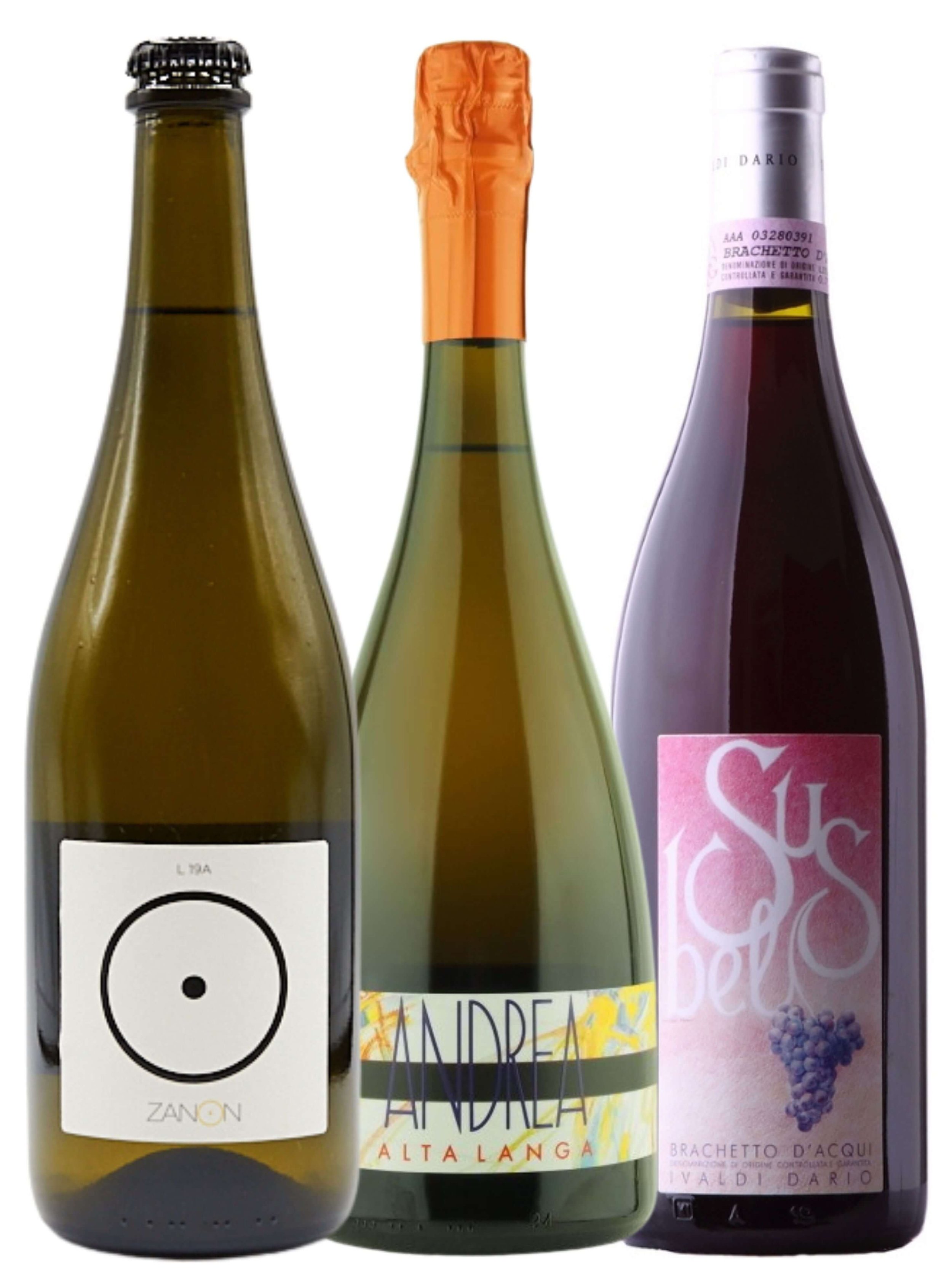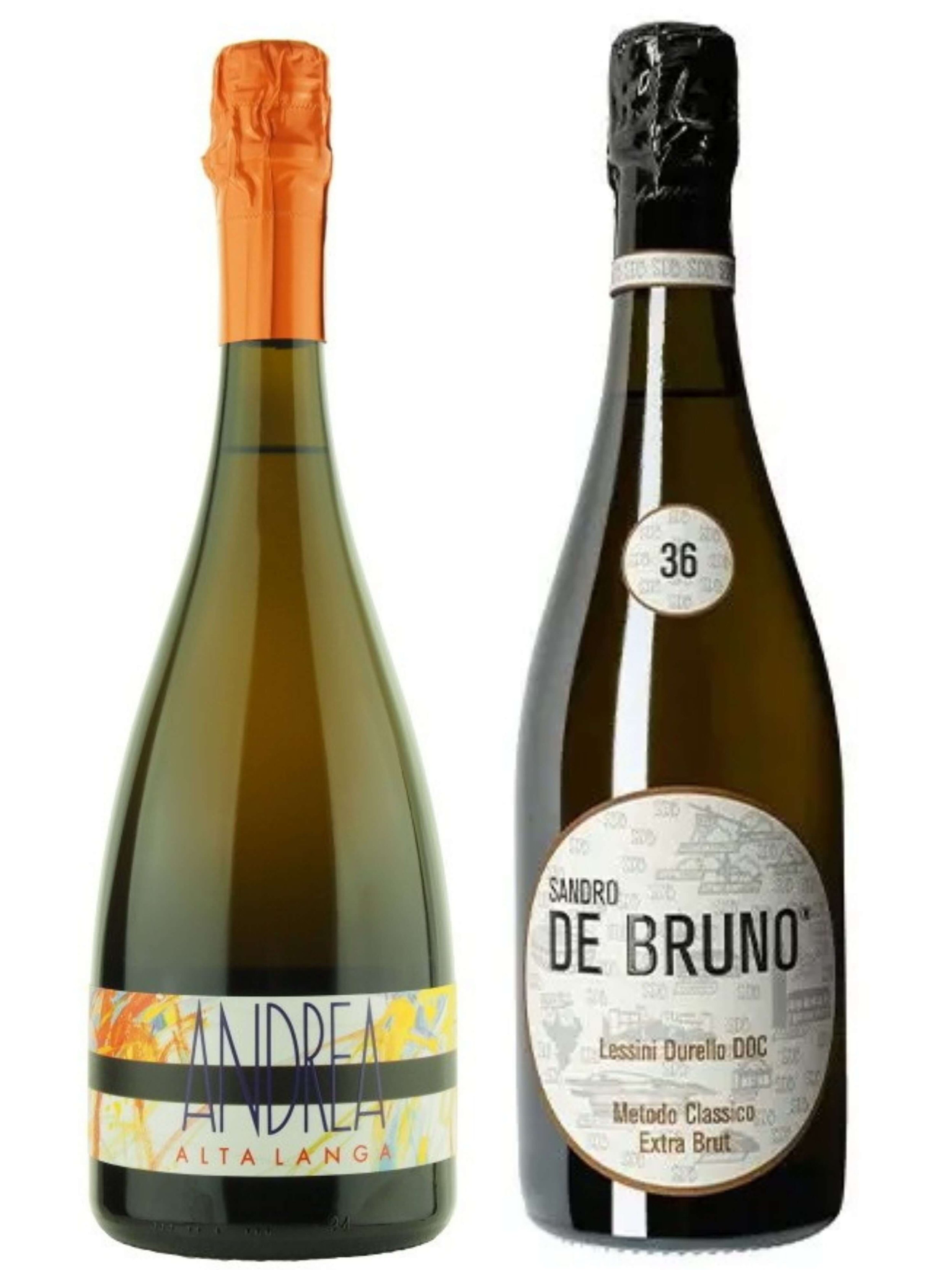The Real Dish on Italian Christmas Traditions
Homemade Bolognese tortellini in brodo, tortellini in broth, paired with Bugno Martino’s organic dry red sparkling Lambrusco.
Italy is a mecca for delicious food and we, Americans, have benefited, thanks primarily to immigrants coming from southern Italy who brought their traditions with them; some of them have gone super mainstream - think pizza!
Even in Italy, some southern Italian dishes have become wide spread throughout the country - yes, like pizza. Yet, beyond this superficial facade, when you explore region by region, even city by city, you’ll find different local dishes and traditions, including different wines.
This patchwork of different cuisines and wines is due mainly to centuries of isolation during the middle ages, whereby even common spoken languages were different city by city. The unification of Italy, as we know it today, happened in mid 1800s, almost 100 years after the US obtained independence. Even today, you’ll find a typical Italian has more allegiance to his or her local town than the country as a whole.
Thanks to this history, there are few places in the world with culinary traditions so varied and renowned as Italy. So, let’s take a look at some of them.
Spoiler alert! We’re not going talk about the Feast of the Seven Fishes since it is considered to be mainly an Italian American Christmas tradition.
Bologna
Bologna, located in north-central Italy, is considered the food capital of Italy with rich appetizers, pasta and meat dishes. It’s a great cuisine for cold weather; so if you spend a Christmas in Bologna, you’re in for a rich feast of foods.
The main Christmas meal in Bologna is a seemingly endless lunch on Christmas day, with course after course. The highlight for sure is a warm bowl of handmade tortellini in brodo, or tortellini in broth. The smaller the better the tortellini, whose filling is made with rich foods which Bologna’s region is known for like mortadella, parmeggiano reggiano and prosciutto. Local legend is that the form of the tortellino, which looks like a belly button, was inspired by a pasta maker’s mistress. And the broth is considered as, if not more important, than the pasta, whereby the bolognesi traditionally go to their local contadino, or farmer, to get an old hen, the secret to a good bolognese broth! A go-to wine to pair with tortellini in brodo is a sparkling wine from Italy, a Prosecco like Col del Balt’s Valdobbiadene Prosecco Superiore. Another traditional pairing with tortellini, and, in fact, the entire Christmas meal is a Lambrusco, like Bugno Martino’s organic dry sparkling red, Essentia.
The highlight of the main, ‘secondo’, course is bollito misto, or mixed boiled meats. The bolognesi serve this dish primarily with the red meats such as tongue, oxtail and the fatty zampone, or pork sausage. A traditional wine to pair with bolognese bollito is the naturally acidic Barbara red wine, such as Aldo Clerico’s Barbera d’Alba from Piedmont.
Piedmont
As with their bolognese neighbors to the east, piemontese families in northwest Italy also have the tradition of serving boiled meats for Christmas dinner, although they choose white meats instead, in particular cappone bollito, or boiled chicken. Like the bolognesi, the piemontesi have a host of traditional sauces they serve with the meats. Selecting lean chickens, they are boiled all day before being pulled apart and served with traditional sauces, such as bagnet russ and bagnet verd. They also use the broth to serve a traditional plin in brodo, or small pinched ravioli cooked in broth. Served alongside the cappone, is almost always cotechino con lenticche, or lentils with a thick boiled sausage (known as a cotechino). Mashed potatoes are also a popular side dish, and certainly someone brought along a torta salata, or the Italian version of a quiche. These special dinners are a time that the piemontese bust out the good wines: the Barolos and Nebbiolos are always favorites. Meanwhile the daily wine enjoyed by the Piemontesi, Dolcetto red wine will make an appearance, especially towards the beginning of the meal.
Naples
Heading down the boot into Southern Italy, in Naples (or Napoli), we find a very different set of traditions than in the north, and no, unfortunately it does not have anything to do with Naples-invented pizza! Traditionally, on Christmas Eve, or the Vigilia, Napoletanos feast on fried fish and capitone fritto or fried eel. They save the meat for lunch or dinner on the 25th. Unlike their northern neighbors, in Naples boiled meats are not front and center on the table. Instead, they favor fried meats and polpette (meatballs) in a tomato sauce, but not with spaghetti! Contrary to popular belief, meatballs are never served with spaghetti or pasta they are eaten alone. A popular side dish to accompany these fried foods and meatballs is a light salad, made with pickled vegetables, olives, and anchovies called insalata di rinforzo, or literally 'fortifying salad'. With dinner, Napoletanos prefer to stick to big bodied, red wines. To go with meatballs, a bold Sangiovese Riserva would be wonderful to celebrate with on Christmas day.
Homemade panettone cooling upside down so to preserve the fluffiness of the cake.
Desserts
For desserts, Italians generally prefer fluffy, thick cakes rather than cookies. A classic Italian sweet with Milanese origins is panettone: a tall bread-like cake filled traditionally with candied fruits and nuts. The process to make panettone is so prolonged, you need a true artisan to do it: proofed like bread, after cooking they are hung upside down from big racks to allow the panettone to cool sufficiently without collapsing in on itself. This is what produces the light, airy texture, often with big air bubbles inside. Panettone may traditionally be filled with candied fruits, there are also now a myriad of other flavor combinations like chocolate and pear.
Another delicious dessert favored by Italian families, is pandoro, or literally ‘bread of gold’, originally from Verona. Tall and fluffy like panettone, they are sometimes filled with flavored creams, but the original version is simply a solid yellow-cake type flavor. Not naturally too sweet, they are coated in a thick layer of powdered sugar before serving to really made it finger-licking good. As a fun fact, the process to coat the pandoro is a special task, entrusted to a family member upon opening. You see, pandoro come with the powdered sugar separate; then, you dump the included sugar packet into a big plastic bag with the pandoro, tightly close the top, and shake shake shake until all the pandoro top to bottom has been covered in sugar. By the way pandoro and panettone are delicious when used for french toast, a tip shared among American ex-pats in Italy.
Aside from the usual panettone, in Naples everyone looks forward to the struffoli. These little balls are made from pasta frolla, or the Italian equivalent of sugar cookie dough. After cooling, they are coated in a honey mixture to create a 'caramel corn' type effect, then finished off with a sprinkling of course bakers sugar. They are sticky, sweet, and a wonderful way to fulfill a sweet tooth.
Do like the Italians do and pair panettone, pandoro or struffoli with sweet dessert wines like Braschi’s Organic Albana Sweet Wine or Vigna Petrussa’s Desiderio (meaning desire!) dessert wine.
Cin cin!
What Italy has in common with America in terms of holiday traditions is to toast one another with a nice sparkling wine. We have a wide selection of sparkling wines including 2 gift sets that, as with all our wines, are small production and sustainably made, including this Holiday Bubbles Tasting Trio and Champagne style Bubbles Set, both special offers with shipping included.
Buon Natale! Merry Christmas!








